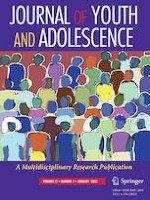13-10-2021 | Empirical Research
Electronic Teen Dating Violence Curves by Age
Gepubliceerd in: Journal of Youth and Adolescence | Uitgave 1/2022
Log in om toegang te krijgenAbstract
Electronic dating violence is a form of violence perpetrated through electronics between dating partners and is associated with worse mental health, greater risk of substance use, and increased risk of in-person forms of dating violence. Though prevalent and seeming to increase in occurrence across adolescence, little is known about trajectories of electronic dating violence throughout adolescence and both risk and protective factors predicting a given trajectory. Latent growth models were used to evaluate change over time in three specific domains of electronic dating violence: harassment, coercion, and monitoring. Data are drawn from two cohorts who were surveyed annually for four years (2013–2017) from age 12 to 15 (n = 543; 48.3% female) and 15 to 18 (n = 597, 46.6% female), respectively. For all three domains of electronic dating violence, a quadratic model fit best. In general, electronic dating violence increased from early adolescence until a peak around age 16 or 17, and then leveled off. Threat-based adverse childhood experiences (i.e., exposure to physical child abuse, parental intimate partner violence, etc.) and earlier engagement in dating behaviors increased long-term risk for both age cohorts. Protective factors such as parental monitoring decreased risk but seemed to only have protective influence at developmentally-specific periods (i.e., during the developmental period of early adolescence). A better understanding of the risk and protective factors that affect the increase of electronic dating violence during adolescence is necessary to develop effective age-appropriate prevention and intervention strategies for youth.
